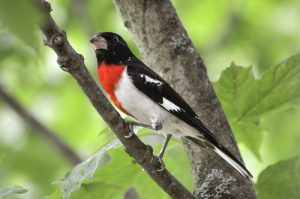If you have made the decision to begin transitioning your lawn to a native plants habitat, but you’re not quite sure where to begin, then this information should be helpful. We will provide some guidance on how to get started. This article is the second part of a 2-part article. To view prior content, please visit: Transitioning Your Yard to Native Plants: Why?
Find a local supplier
One of the first steps in the process is to find a good local supplier that has expertise about native plants. They will be able to advise you along the way and provide expertise and options for how to best develop your native plant garden. Use someone local whenever possible – someone that can access plants that are specific to your region, from your region. Big box suppliers may have plants labeled as native, but may actually come from places far from your location. Often you might find native plant ‘cultivars’ – which are a modified version of a native plant and may not provide the same type of benefits. If you are not sure who your local experts are, a good resource is the New York Flora Association. Their board members likely know people throughout the state that can help you with true expertise.
Determine Parameters – Identify Conditions
Next in your process is to designate your space. You can start with one area and expand this over time. Select a practical location to begin and allow for room to expand over time. You will want to assess the existing conditions of this space. Is it sunny throughout the day or well shaded? What is the soil type? Look at drainage and other factors that might impact the types of plants that would be best suited for that location. When you have this information, consult your provider for recommendations on what plants might be best.
Plan Your Design
Consider the design for your garden. In addition to focusing on plants that provide a good variety and quantity of food resources (nuts, berries, seeds, nectar, etc.), you might also want to incorporate vertical structure – with plant species grouped together and providing different shapes, sizes and heights. You can design for seasonal colors and blooms, with some plants that bloom in spring and others that bloom in fall months. Other features can include natural concave rocks for catching rainwater, and some brush piles or branches to create additional shelter throughout the year.
Prepare Your Soil
To prepare your area for new plants, you may need to remove lawn or any invasive plants. Add compost to the soil for a nutrient rich environment. Once you have prepared the soil, you can cover with layers of newspaper and mulch until you are ready to plant.
Plant and Enjoy
Native plants need time to adapt to their new habitat, so it is recommended to plant on cooler days in Spring or Fall, or during a cooler summer week. They will need some basic watering and care while they start out for the first few weeks, but after that, maintenance is just checking for and removing any invasive weeds that appear. If you have additional questions, you can find information at Bird-Friendly Plants FAQ from National Audubon Society.



